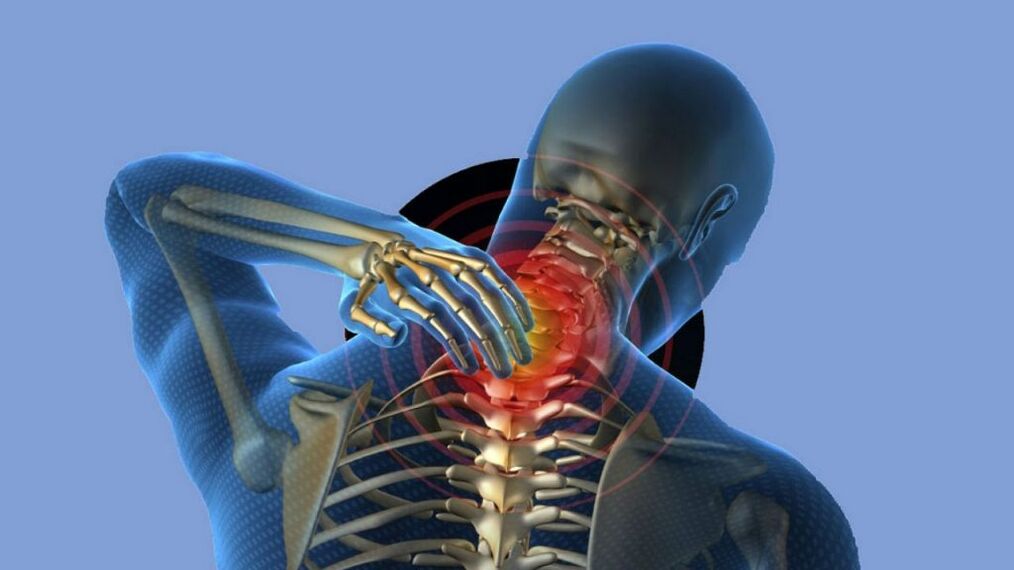
Underneath the cervical spine osteochondria means a degenerative-diogenic pathology that affects the discs between the vertebrae.The disease is mainly diagnosed in people from 30 to 50 years, but it can occur at a different age.It is important to determine the pathology in a timely manner and to conduct the appropriate treatment.If this is not done, the disease will go to a new stage of development, which can cause the need for surgery to replace the intervertebral discs with intentions.
Causes of the disease
The neck osteochondria occurs for the following reasons:
- Lifestyle.
- portliness;
- Inappropriate nutrition.
- Previously they suffered injuries to the spine, especially if the parts of the cervical area were damaged.
- excessive physical activity;
- Stay at the same posture with a sloping head for a long time - for this reason, the pathology is often diagnosed with office employees working on the computer.
- Genetic predisposition.
- Unstable emotional background.
- Hypothesis of the throat.
- Autoimmune pathologies, as a result of the growth of the cartilage tissue.
- Incorrect structure of the spine diagnosed by birth.

The development of cervical osteochonda is also facilitated by a genetic predisposition.
Degree and type of illness
The cervical osteochondria goes through various stages of growth, each of which has some symptoms:
- The first stage disease.This is the beginning of the development of pathology.The patient has pain in the affected area, which is intensified during movement.This stage is also characterized by the rear muscle voltage and rapid fatigue.The pathology at this stage does not need treatment.The disease can be eliminated using the right power system, exercise treatment and abandonment of harmful addictions.
- The second stage of pathology.The disease progresses, affecting intervertebral discs.Their height decreases, which leads to a decrease in the distance between the vertebrae and the nerve sting.As a result, pain syndrome becomes more severe.He intensifies when his head moves and gives him shoulders or hands.Such symptoms also occur - carelessness, fatigue, pain in the head area.For the treatment of pathology, medication is prescribed.
- The third degree of the disease.The hernias of the intervertebral discs begin to form.Pain syndrome is reinforced.The pain lies in the neck and head and gives the shoulders and hands.The dizziness appears, the patient is weak.The neck loses mobility.Especially the acute attachment is noticeable in the morning.
- The fourth stage of the disease.The intervertebral discs are completely destroyed.Their position is occupied by connective tissue.The pain is intensified and does not disappear even during sleep, the throat almost stops turning, the dizziness becomes more common, the patient loses the coordination of movements and there is noise in the ears.
Clinical picture
Schop osteochondria is manifested in different ways, depending on the damage to specific parts.However, there are general symptoms features of the injury to any vertebra of the department:
- Head pain syndrome, giving the chest, hands, shoulders.
- Vision of vision and hearing.
- crunching when you move the throat.
- numbness of the upper extremities and the end of the tongue.
- weakness in the muscles of arms, legs.
- Increase in blood pressure.
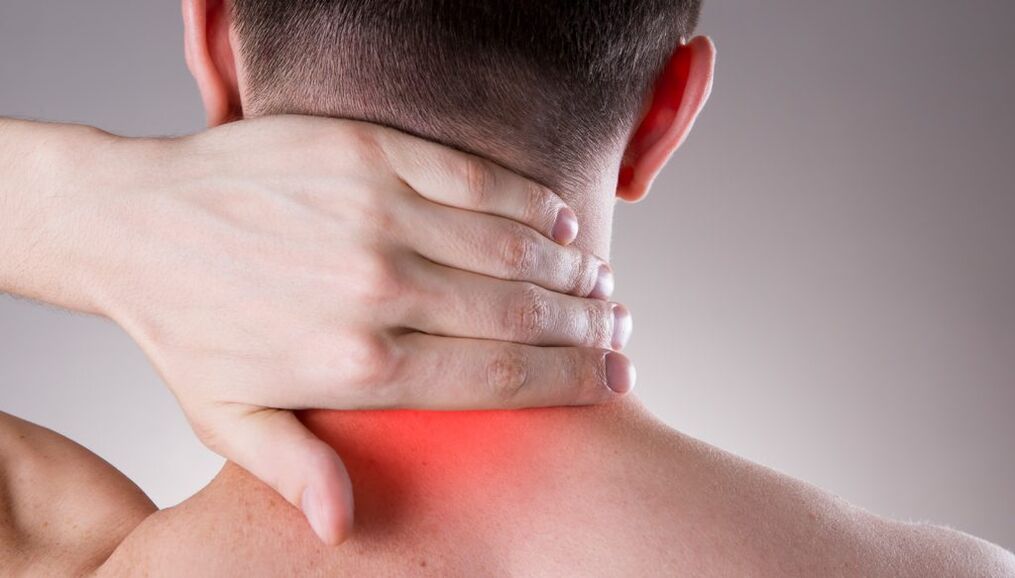
The pathology is also characterized by certain syndromes, each of which is discussed in detail below.
Radio frequency syndromes
With cervical osteochondria, the nerves are crumpled, as a result of which a syndrome flows pain.The pain gives the shoulders and hands.The following symptoms also appear:
- Small pimples at the base of the hair on the skin, which in common people call geese.
- tingling the skin.
- Loss of elasticity and elasticity of the skin.
- Soft tissue swelling.
- Skin slaps.
Artery syndrome
Characterized by the following symptoms:
- burning or pulsating, constant or paroxysmal pain, which intensifies when the head moves or stays at a standstill for a long time.
- dizziness and fainting.
- nausea;
- loss of coordination of movement;
- noise in the ears and deterioration of hearing.
- Eye pain.
- Vision of vision.
Cervical migraine syndrome
If cervical spine osteochondry occurs, this can lead to the appearance of cervical migraine syndrome.In this case, the nodes of the sympathetic column are irritated.As a result, there are problems with brain boats and blood circulation.This leads to a regular increase in blood pressure characterized by the following symptoms:
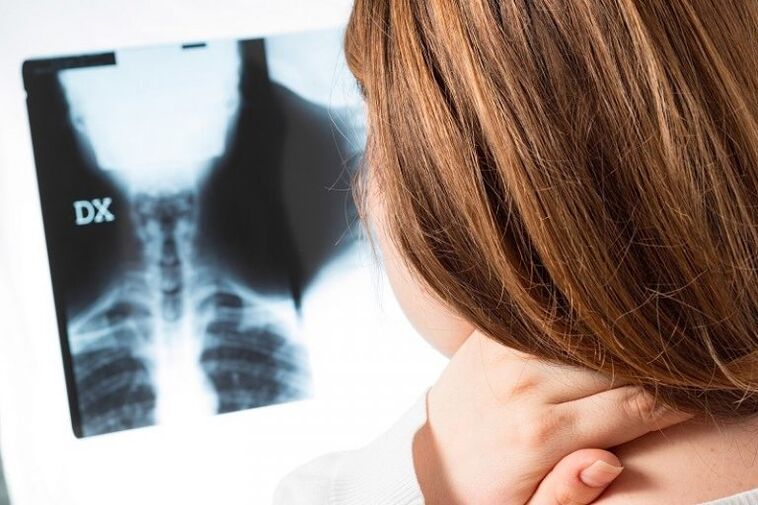
- Heart rate.
- noise and ringing in the ears.
- The listening is deteriorating.
Hypertension
If the cervical spine osteochondria caused the onset of hypertension syndrome, then the patient increases intracranial pressure.Such symptoms appear:
- explodes pain;
- nausea with vomiting.
- Increase body temperature.
When examining the blood, the rise of erythrocyte settlement rate will be reported.
Diagnosis
For the diagnosis of pathology, organic research and laboratory tests are prescribed.
Organic
If signs of cervical osteochondicity occur, it is recommended to consult a doctor.Only one expert can diagnose a pathology.Therefore, a professional defines such an organic research:
- X -ray.Such a study is rarely prescribed as it does not give a complete idea of the development of pathology, especially for the 4th stage of the disease.
- Ct.It helps identify the changes that have occurred in the vertebrae.However, this study cannot determine the presence of herbs between the sections, which means that it will say nothing about their form and size.
- Mri.It helps detect any spine breach, including the intervertebral hernia.
- Double -sided ultrasound.Such a study is prescribed if there is suspicion of problems with blood circulation in the spine vessels.The double -sided ultrasound will show the presence of blood flow disorders, as well as obstacles that interfere with the normal blood course.
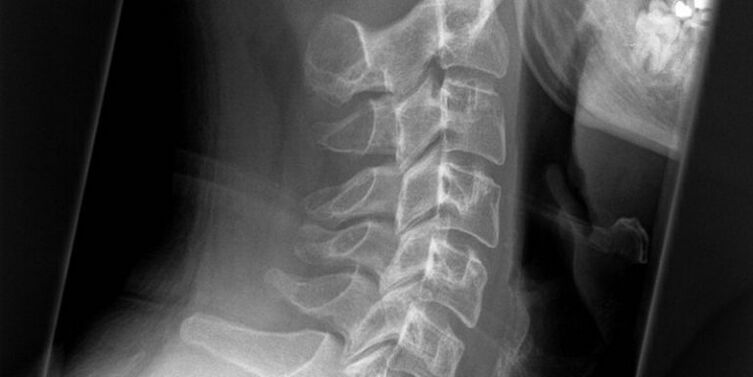
Laboratory
With cervical osteochondria, a general and biochemical blood test is also prescribed.Such studies do not help diagnose the pathology, but the doctor may determine the patient's health status, as well as obtain information on the inflammatory procedure.
Traditional treatment
The treatment of cervical spine is prescribed by a doctor.Treatment is very difficult and lasts long.Treatment aims to inhibit the development of the disease and eliminate symptoms.To this end, medicines, physiotherapy, exercise therapy and other procedures are prescribed.If conservative treatment has not given the desired result, surgery is performed.
First aid for exacerbations
First aid should be provided to the patient if he experiences serious, unbearable pain and if his neck is blocked in one position.It is advisable to call an ambulance group immediately and before arriving experts, you must act as follows:
- Rub an analgesic ointment at a sly spot.
- Give the patient an analgesic.
- To make a camphor compression - this will help restore joint mobility, improve blood microcirculation and relieve pain.
Before the doctors arriving is impossible:
- Try to massage the patient.An incorrect move will lead to deterioration of the situation.
- Rub the heating ointment in the injured section.If the pathology is accompanied by an inflammatory process, then the use of such a tool will lead to a deterioration in the situation.
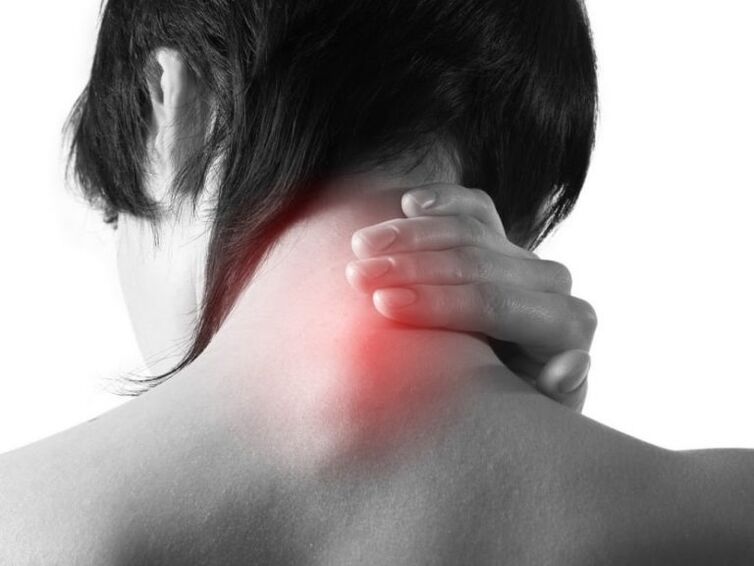
Emergency experts to reach either the problem on the spot or take the patient to the hospital.The treatment of cervical osteochondrication will be prescribed after diagnostic measures.Usually, after the first aid, the patient is rejected home to undergo an external treatment.
Medicine
Treatment of cervical spine osteochondry is based on the use of such drugs:
- Non -syllables with anti -inflammatory properties.Such medicines are exempt from the symptoms of the disease.The funds also stop the inflammatory process and store the traumatic nerve from the swelling.The tablets are consumed 2-3 times a day after eating.The duration of treatment is 2-3 weeks.
- Musorelaxants.Muscle spasm and muscle tissue are unloaded.
- Corticosteroids.These are hormonal drugs.The media are prescribed only if other medicines have proven their ineffectiveness.Medicines have a large number of contraindications and side effects so you can use them for treatment only as defined by a doctor.
- Diuretic.Relieve the body from excessive liquid.Thanks to this, medicines help remove the swelling of the soft tissues at the point of the inflammatory process.
- Block.Doctors usually prescribe subcutaneous or intramuscular drugs.The drugs are administered at various points in the area of injured vertebrae.This allows you to stop the pain syndrome.
- Coarse Protectors.They stop the development of pathology and help restore injured cartilage.
- B Vitamins B. Improve metabolism and neuromuscular conductivity.
Surgical
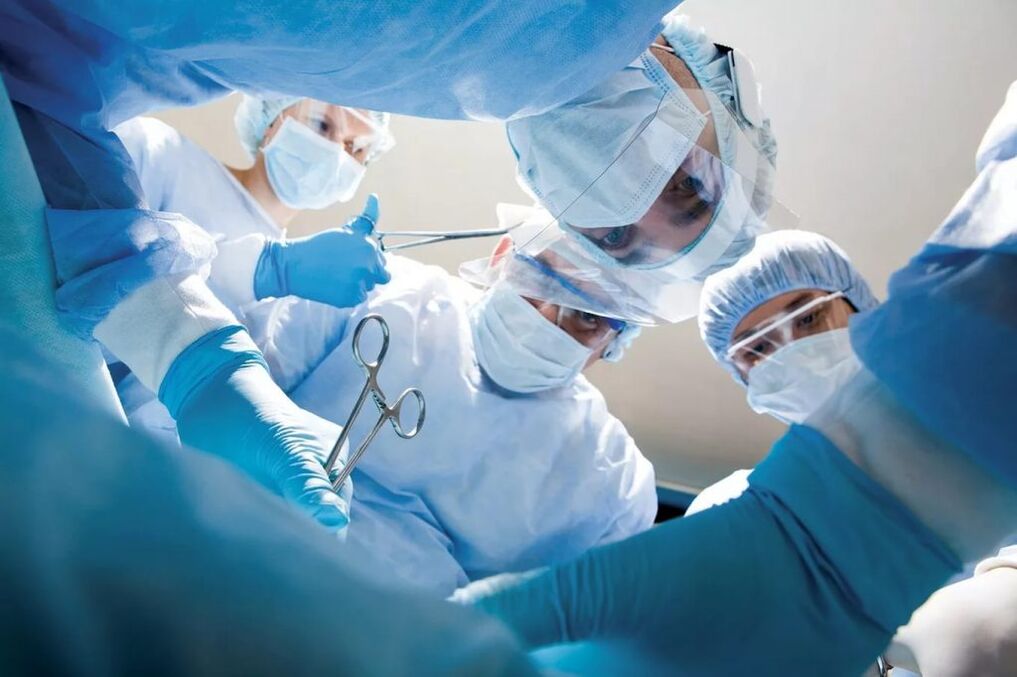
Surgical intervention is prescribed in the latest stages of disease development and only with the ineffectiveness of conservative treatment.The evaluation of the treatment result is performed in six months.In the absence of an effect, surgery is carried out.The function can be prescribed earlier if unbearable pains occur or a paralysis of the extremities have been observed.
Gymnastics for the throat
The treatment of home pathology is based not only on drug use but also on the performance of special exercises.Exercise therapy is prescribed by a doctor.Classes are performed only during the recession of the disease.To get rid of the intervertebral, it is recommended to perform such exercises:
- Lying on the stomach with emphasis on the floor, the lifting of the head and body is performed.Exercise is repeated 2-3 times with stabilization at the top of 2-3 minutes.
- Lying on the stomach, they perform repetitions on one another, touching the floor of the floor.The number of repetitions is 7 in each direction.
- Sitting on the floor, he leans forward in the chin of the chest, after which they lean behind, throwing his head back.Exercise is performed 10-15 times.
- The meeting put their palms on the front and press.Then press their heads in the palm of your hand.The number of repetitions is 2-3.
- Staying, they rotate their head first in one, then in the other direction.The number of repetitions is 10.
Physiotherapy
To get rid of cervical osteochondria, physiotherapeutic procedures are also prescribed.Such treatment helps get rid of the symptoms of the disease and helps to repair the injured cartilage.The following procedures are usually prescribed:
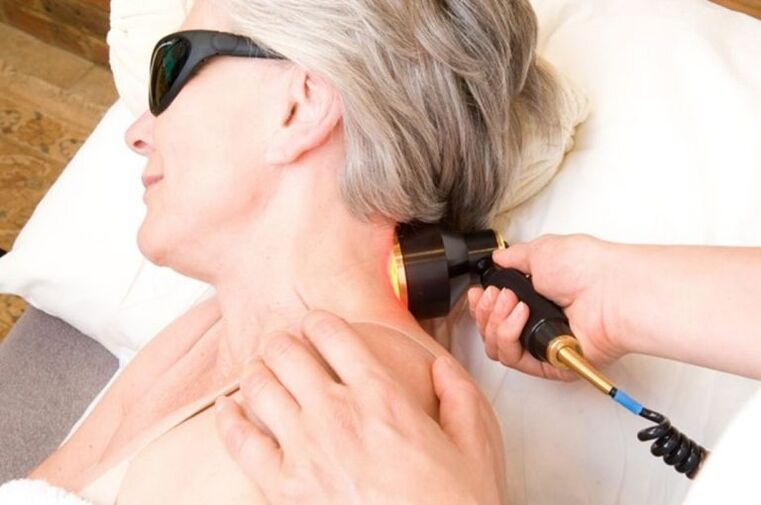
- Laser treatment.The essence of the method is the effect of the laser on the affected areas of the spine.This improves blood microcirculation and stops the inflammatory process.
- Electrophoresis.The process is done with painkillers.The essence of the method is the effect on injured parts of the body with a small load of electricity to pass ions along with drugs in the damaged spine.
- Ultrasound.The process improves the metabolic processes that occur in the cells, stops the pain syndrome and stops the inflammatory process.
- Magnetotherapy.It discovers the swelling of soft tissues and eliminates the pain syndrome.
In order to increase the effectiveness of treatment, alternative treatment methods can also be prescribed:
- Massage of the cervical zone.
- manual treatment?
- acupuncture and other processes.
Nutrition
The cervical cervical treatment will be ineffective if you do not comply with certain nutritional rules.Diet will help:
- Avoid lacking beneficial substances as vitamins and minerals are involved in metabolic processes of intervertebral disc cells.
- Normalize body weight, which will reduce the load in the spine column.
- To minimize the likelihood of sclerotic changes in blood vessels, thereby reducing the risk of blood supply disorder to the brain.

The basic principles of proper nutrition for cervical osteochondria:
- The diet should be balanced with the daily dosage of Kilocalories-1200-1500.
- Foods are taken in small portions 5-6 times a day.
- Observe the alcohol consumption regime to prevent dehydration of intervertebral disc fabrics - at least 1.5 liters of liquid are drunk on the day.
- Limit the salt consumption after keeping the liquid in the body, causing the appearance of tissue swelling.
- Limit consumption of starch and flour products.
- Except fat, fried, spicy, smoked diet.
- They refuse to use alcohol and sweet carbonated drinks as well as box storage juices.
- Fresh vegetables and fruits, lean meat, lean varieties of fish, cereals, milk and sour dairy products with a minimal mass of fat are inserted into the menu.
Tibetan
Even with cervical osteochondria, doctors recommend the use of a Tibetan application to improve the condition.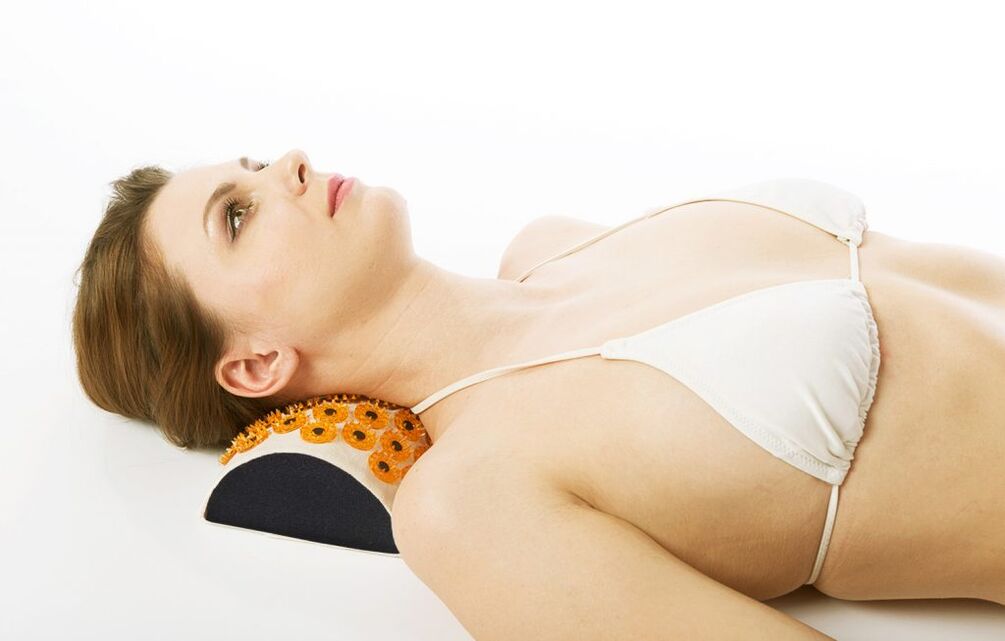 This is a device with spikes of plastic that affect the skin.The patient applies the applicator to the problematic area and occupies a position located.As a result, the skin receptors involved in the normal processes of the body are annoyed.
This is a device with spikes of plastic that affect the skin.The patient applies the applicator to the problematic area and occupies a position located.As a result, the skin receptors involved in the normal processes of the body are annoyed.
This procedure gives the following result:
- Sleep direction is normalized, improved quality and duration of night rest.
- Pain syndrome stops.
- Blood microcirculation improves.
- The mobility of the joints is restored.
- Performance is increasing.
The Tibetan Applider has contraindications:
- Pathology of the skin.
- Diseases resulting from infections.
- Vascular diseases.
- Oncological pathologies of malignant nature.
You can only use the device after consulting a specialist.
Folk therapy
The use of non -traditional drug is another way of treating cervical osteochondicity.Such medicines are used only with the permission of the doctor.Public medicine increases the effectiveness of pharmaceutical treatment.To treat the disease, it is impossible to use as independent medicines.Below are recipes for the preparation of non -traditional medicine for the treatment of osteochondry.
Cabbage
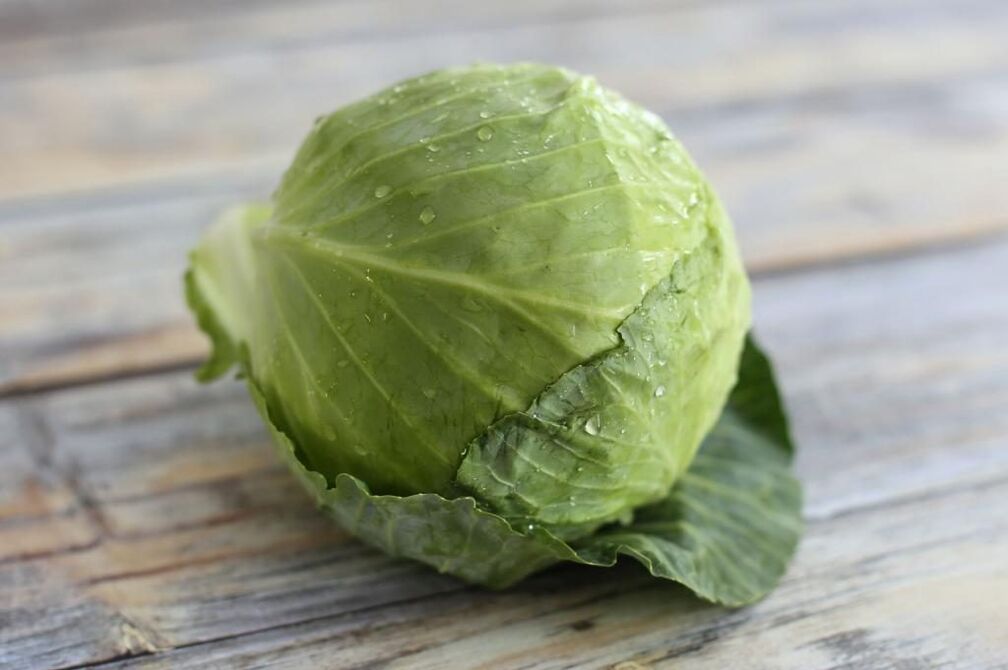
A sheet of fresh cabbage is slightly beaten with a hammer for softening.After that, it is stable in the problematic area and insulated.Compression is maintained for several hours.The process is performed daily.Instead of a cabbage sheet, you can use horseradish leaves.
Hops based on hops
The necessary items:
- Hops chopped powder - 1 large spoon.
- Butter - 1 large spoon.
The products are connected and mixed.The resulting composition is treated with the affected area and the insulation bandage is determined.The compression is maintained from a few minutes to several hours.The process is performed daily.The ointment is stored in the refrigerator.
Compression of honey
The necessary ingredients:
- grated raw potatoes - 1 large spoon.
- Honey - 1 large spoon.
The accessories are mixed and placed in a piece of gauze.Compression is stable in the problematic area for 20 minutes.The process takes place once every 7 days.
Prevention of the disease
The following preventive measures will help avoid the appearance of pathology:
- Drive an active lifestyle - playing sports, better swimming.
- Enrich the diet with products containing magnesium and calcium.
- Many times a day makes a warm -up during work.
- Use orthopedic bed linen for night rest.
- Take a warm shower daily for 10 minutes.
- abandon excessive physical activity.
- Visit a doctor regularly and in a timely manner of the treatment of pathologies, which can cause cervical osteochondry.
What is the dangerous osteochondria of the throat
The main risk of the disease is that the lack of timely and specialized treatment can cause complete immobilization of the joints, which leads to disability.In addition, cervical vertebral sting negatively affects blood supply to the brain.As a result, headaches and other appropriate diseases occur.For this reason, you cannot ignore the pathology.

Cervical osteochondria is a spine pathology, which in the absence of timely specialized treatment leads to sad consequences.To avoid this, it is recommended to consult a doctor after the first symptoms of the disease.














































